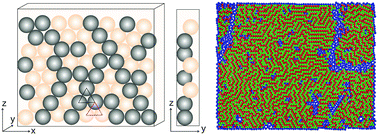Morphodynamics of sea ice: exploring morphological evolution of ice rubble and ridges during the seasonal life cycle of deformed first-year sea ice
Rocky S. Taylor, Memorial University of Newfoundland, Canada
November 13, 2017
Abstract: Sea ice features in nature can take on many different forms. For marine and offshore engineering applications, ice loads during interactions with ice rubble and ice ridges are an important design consideration. Morphodynamic aspects of sea ice deformation and degradation processes are of interest in understanding the seasonal evolution of these features, since such methods may provide opportunities to simplify modelling of these highly complex processes. During deformation of a level ice sheet, it is of interest to understand how resultant distributions of block sizes and shapes are linked to the parent ice thickness and other environmental conditions. Similarly, for existing ice rubble and ridges, it is of interest how block shape evolution occurs during freezing/thawing cycles and how this influences the internal buoyancy forces on submerged ice blocks within a ridge. Such processes in turn influence rubble pile stability, since evolution of the shapes and associated centres of buoyancy for each block will change the distribution of stresses on the bonds between them. This can influence the degradation of strength of ice ridges, ultimately contributing to the breakdown of these features during spring thaw. These processes are of interest to help identify the key deterioration mechanisms for ridges, since it is not clear if this process would result in local progressive failure of a ridge (e.g. blocks shed away gradually from the outside with the failure front moving inward over time until the whole ridge is gone) or if there is sufficient reserve strength in the bonds so that the change in buoyancy results in a build-up of stresses due to these shifting buoyance forces that ultimately results in a sudden, global collapse of the whole ridge. Understanding these processes is important in developing new mathematical models, not only for modelling strength of deteriorated ridges during ice-structure interactions, but also for improving deterioration models that may be incorporated into larger-scale thermodynamic ice environmental models.

BRIEF BIOGRAPHY – ROCKY TAYLOR, PHD, P.ENG
Dr. Rocky Taylor is an Assistant Professor in Mechanical Engineering at Memorial University of Newfoundland in St. John’s, Canada, where he is also the Centre for Arctic Resource Development (CARD) Chair in Ice Mechanics. In this role he leads a team of researchers and graduate students working on Ice Compressive Failure Mechanics, Ice Rubble Mechanics, Ice Environmental Characterization and Ice-Structure Interaction Modelling. He has carried out field work in the Labrador Sea, Northern Newfoundland, the North Humberland Strait, the Caspian Sea, and the Barents Sea. He has more than 50 peer reviewed publications, has worked on many industry and academic projects and is currently a member of the ISO 19906 Canadian Review Committee.


